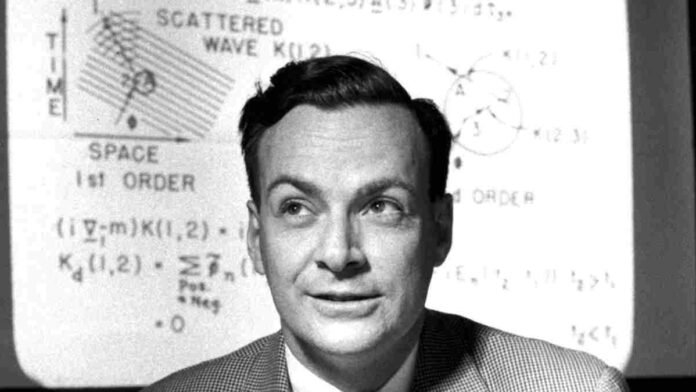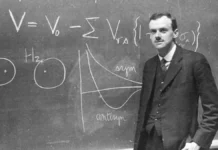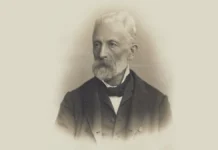A pair of influential and powerful scientists of nature often define twentieth-century physics. That is, theories such as the theory of general relativity and Quantum Mechanics were brought to the world in 1915 and 1925, but between these years in 1918 came another great scientist who was able to define twentieth-century physics single-handedly. Whose name is Richard Feynman?
Richard Feynman was an American Theoretical Physicist widely regarded as the most brilliant and influential figure in physics in the post-World War II era. Richard Feynman remade Quantum electrodynamics (Quantum electrodynamics is called the interaction between light and matter).
Apart from this, Feynman is known for his work in path integral formulation, quantum mechanics, physics of supercooled liquid helium, and physics of particle physics. Feynman was awarded the Nobel Prize in Physics in 1965, jointly with Julian Schwinger and Shinichiro Tomonaga, for their contribution to the development of quantum electrodynamics.
Contents
The early life of Richard Feynman
Born in Far Rockaway, New York City, Richard Feynman was a descendant of Russian and Polish Jews who immigrated to the United States in the 19th century. Financially, his family was neither rich nor poor, meaning he lived a comfortable life but was not wealthy.
Richard Feynman’s parents
Lucille Phillips was the parent of Richard Feynman, a homemaker, and Melville Arthur Feynman, a sales manager. Like Albert Einstein and Edward Taylor, Feynman was also a late talker. The young Richard was heavily influenced by his father, who encouraged Richard to challenge orthodox thinking and always to ask questions, and who was always ready to teach Richard something new.
Childhood of Richard Feynman
Richard Feynman inherited a sense of humor from his mother. Young Richard was interested in engineering, although his parents were happy with it, but wanted to make Richard a scientist. Unfortunately, Richard’s younger brother died at four weeks on 25 February 1924. At the time, Richard was only five years old. Richard’s sister Joan was born four years later, and the family moved to Far Rockaway, Queens.
Joan and Richard both had similar thoughts because they both had a curiosity to learn about the universe and nature; even after their mother disapproved of Joan’s desire to study astronomy, Richard told his sister to know the universe And thus became an astrophysicist, specializing in the interactions between Earth and Solar Wind after the sister of Richard grew up.
Richard Feynman’s Education
At age 15, Richard Feynman took over Trigonometry, Advanced Algebra, Infinite Series, Analytic Geometry, Differential, and Integral Calculus. Before entering college, Richard experimented with mathematical topics to create mathematical notations and special symbols to make it easier to identify logarithm, sine, cosine, and tangent functions.
The young Richard had mastered Mathematics, and it was for this reason that he won the Youth University Mathematics Championship. Richard studied physics at the University of Massachusetts Institute of Technology, where he proposed a basic and sustainable approach to calculating forces between molecules.
Richard Feynman received his doctorate in 1942 from Princeton University. He developed an approach to quantum mechanics with John Wheeler, Richard’s advisor at Princeton. This approach completely changed the wave-oriented electromagnetic picture set by James Clerk Maxwell to particle interactions mapped in space and time. In addition, Richard’s method calculated the probability of all possible positions of a particle from one point to another.
Richard Feynman’s Career and Research
During World War II, Richard Feynman was made a staff member of the American Atomic bomb project at Princeton University and then a staff member at the secret laboratory in Los Alamos, New Mexico, the lowest in the theoretical division of the Richard Manhattan Project in Los Alamos He became a group leader of the age with Hans Bethe, the head of that division. He prepared a formula to know the energy yield of nuclear explosives.
Richard Feynman used new machines for calculating vast amounts of numerical computation in the Manhattan Project. After completing all the tests, he saw the first test explosion of an atomic bomb near New Mexico on 16 July 1945. Although his initial reaction was very encouraging, he later expressed concern. He thought about the force of the atomic bomb, which he and his colleagues together succeeded in how dangerous it could prove to be for the world.
After the end of World War II
Richard Feynman became an associate professor at Cornell University after the end of World War II and continued his study of quantum electrodynamics. By 1948 Richard solved the meaningless theory of old electrodynamics by completing quantum mechanics and quantum electrodynamics,
He introduced simple diagrams, which are now known as Feynman diagrams. In 1950 he remained a professor of theoretical physics at the California Institute of Technology (Caltech), Richard’s speeches at Caltech developed into quantum electrodynamics and the theory of fundamental processes.
In 1961 he began to reconstruct and teach the early physics textbook at Caltech; his lecture at Caltech was published as “The Feynman Lectures,” which became a classic textbook for his contribution to the development of quantum electrodynamics. With Julian Schwinger, Richard Feynman was awarded the 1965 Nobel Prize in Physics. Richard Feynman was also elected a member of the Royal Society and was awarded the 1979 national medal.
Death
Richard Feynman died in 1968 after a long struggle with cancer. He gained widespread fame. His remarkable achievements have made an essential contribution to the development of modern physics.
Sources
- Feynman, R. (1995). Richard Feynman. Davies, PCW & Brown, J. Superstrings, a theory of everything, 192-210.
- Forstner, C. (2020). Biography and Autobiography in the Making of a Genius: Richard P. Feynman. In Biographies in the History of Physics (pp. 145-159). Springer, Cham.
- Holmes, R. (2012). Biography: The scientist within. Nature, 489(7417), 498-499.
- Anderson, P. W. (1993). Genius: The Life and Science of Richard Feynman. Science, 259(5094), 537-540.
FACT CHECK: We strive for accuracy and fairness. But if you see something that doesn’t look right, please Contact us.
DISCLOSURE: This Article may contain affiliate links and Sponsored ads, to know more please read our Privacy Policy.
Stay Updated: Follow our WhatsApp Channel and Telegram Channel.













I especially appreciate how you provided practical examples to illustrate each point. Looking forward to more insightful content from you in the future.
NetSuite Partners in India
Hello, there mates, how is all, and also what do you want to say regarding this post, in my sight, it’s truly amazing in support of me. https://www.cinntra.com/
I used to be able to find good information from your blog articles.
Here is my homepage – “https:\\www.sfexaminer.com/marketplace/buy-cbd-oil-top-3-cbd-oils-for-sale-in-2020/” CBD for sale
If someone desires to be updated with latest technologies therefore
he must visit this site and be up to date every day.
Feel free to visit my blog post: https:\\observer.com/2021/01/best-cbd-gummies/
Howdy just wanted to give you a quick heads up.
The words in your article seem to be running off the screen in Opera. I’m not sure if this is a format
issue or something to do with internet browser compatibility but I thought I’d post to let you know.
The layout looks great though! Hope you get the problem solved soon. Thanks
Check out my page … best CBD